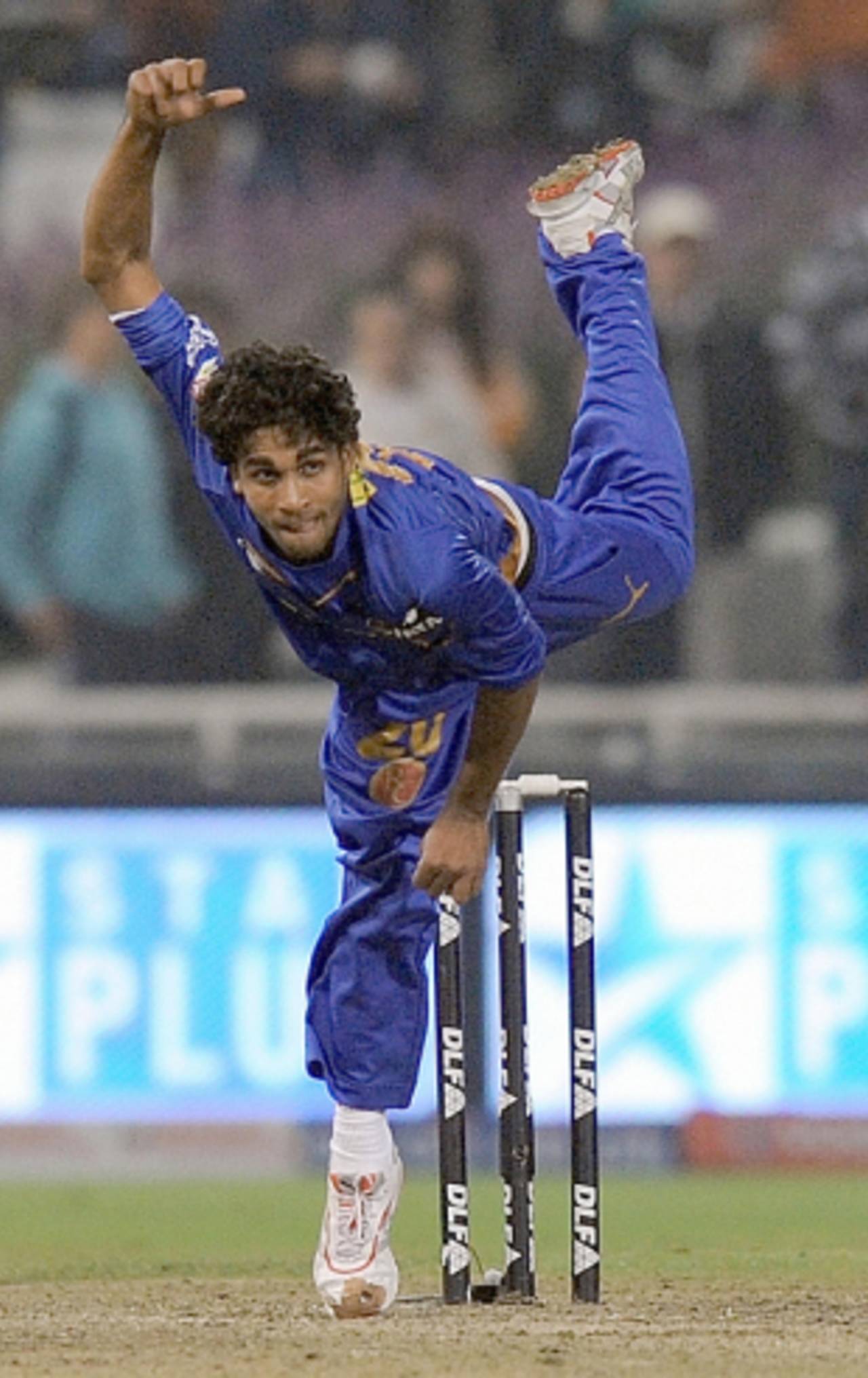Two overs too many
The Super Over ruined what had been the perfect match, with all the elements of a classic sporting contest
Sambit Bal
24-Apr-2009

Did we need a tie-breaker after rookie Kamran Khan's fantastic final over? • AFP
So what's wrong with a tie?
Arguably, the Super Over is far less unsatisfactory than the farce of a Bowlout. It is at least a contest between bat and ball. But do we really need it?
The tie is the rarest result in cricket and, in many ways, the most beautiful. And just. Often it is the true measure of how close the game had been, and how equal - good and bad - the teams were.
I am not a fan of tie-breakers in football either. It reduces the game to a skill of sharp-shooting. But often they happen to the most exciting part of a dreary match, as drawn football games are, with defensive teams playing for the tie-breaker.
The tie is different from a draw. A drawn cricket match can be exciting too, but a tie is invariably thrilling. And the finish often leaves the spectator emotionally spent. Fulfilled but spent. It's a unique combination of regret, relief and exhilaration. For a while you replay that moment that could have won your team the match, and then realise that it could have been lost too. And then you come to the realisation that you have seen the perfect finish, and the rest of the evening, or night, can be spent in that warm glow.
The tie-breaker feels like a charade, a contrived climax after the grand climax. It can produce a high for fans of the winning team but it's a temporary one.
I watched India and Pakistan play out a tie-breaker in the World Twenty20 in 2007 and it left me cold. It had been a dramatic match with plenty of twists and turns. Batting first, India had managed only 141 but reduced Pakistan to 103 for 6 in the 18th over. Misbah ul-Haq and Yasir Arafat then belted 27 off the next eight balls to leave Pakistan needing 12 off the last six. The match ended with a dramatic run-out in the last ball with the scores level.
Or so I would have liked it to end. But then a Bowlout ensued, and Robin Uthappa, Harbhajan Singh and Virender Sehwag proceeded to earn India a win by hitting the stumps after all three Pakistani bowlers - Umar Gul, Arafat, and Shahid Afridi - failed to the find the target.
Thursday's match between Rajasthan Royals and Kolkata Knight Riders was the best of the tournament so far. It had all the elements that make a great Twenty20 match: dramatic fluctuations, outstanding individual performances, excellent tactical manoeuvres, a couple of stirring human stories and a great finish.
Rajasthan stumbled at the start, recovered through an adventurous innings by one of their heroes of last season, were pegged back again by a mystery spinner playing his first match of the season and finished the innings with a flourish with an IPL debutant thrashing two sixes and a four in the final over with his charismatic captain looking on approvingly from the other end.
Kolkata's innings started with a twist, a spinner and a dibbly-dobbler opening the attack. The captain fell early but the cavalier, who hits sixes as casually as most batsmen tap singles, was looking like running away with match when the ageing magician got him to spoon one to his best fielder. Then, with match slipping away, a besieged folk hero produced two stunning sixes but, just when the matter seemed to have been sealed, a rookie who had been playing tennis-ball cricket in obscurity till he was discovered by Rajasthan in a talent-hunt survived a first-ball wide to bowl six impeccable balls to force a tie.
Who needed more? I don't know about you, but the Super Over ruined for me what had been the perfect match till then.
PS: As some readers have pointed out, I can see and live with tie-breakers in knock-out matches. One-day cricket has survived without it, though, and in World Cups there is a provision of deciding the winner based on previous results in the competition. In the 1999 World Cup, Australia went through to the final after a tied semi-final on the virtue of having beaten South Africa before. (Imagine that match being decided by a tie-breaker.) But there is no compelling reason for not letting a tie stand in bilateral series or in preliminary rounds.
Sambit Bal is the editor of Cricinfo